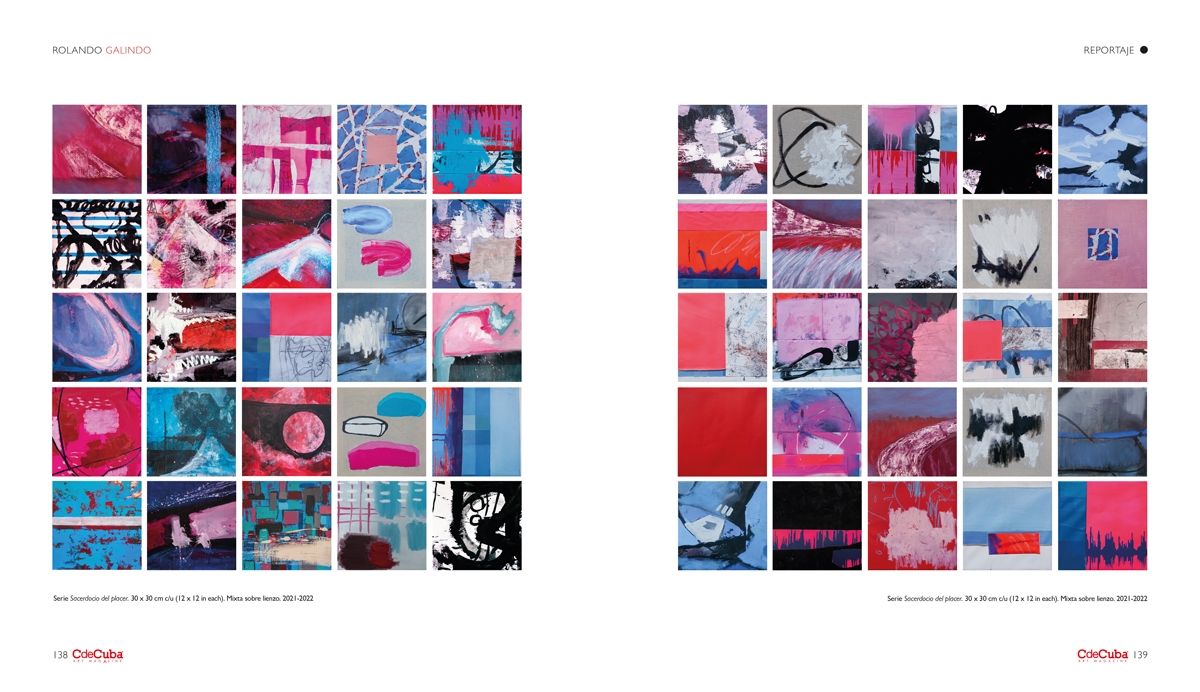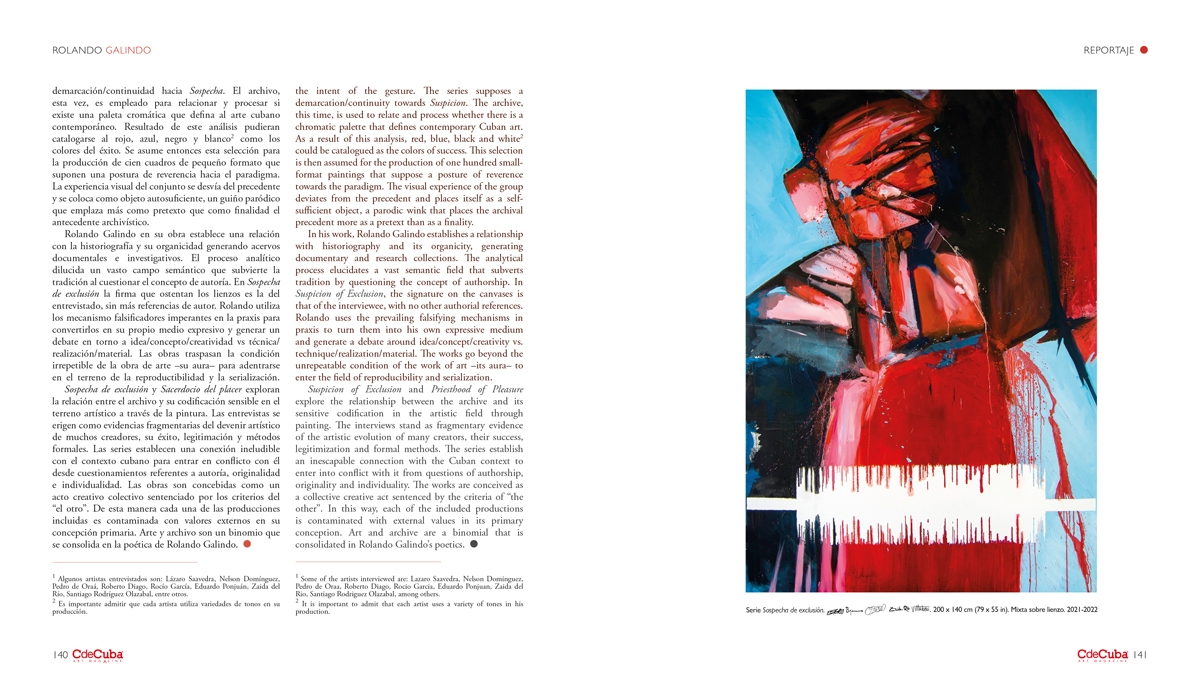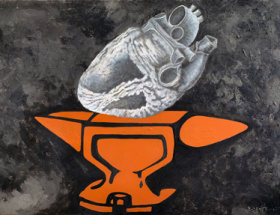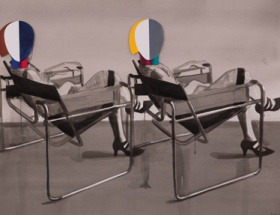Audio Track
By Maybel Elena Martinez Rodriguez
The artist creates its own myths , the most important of these is the myth of themselves.
Jose Luis Cuevas
Contemporary art wields the archive as a discursive, formal or aesthetic tendency. It is a common place, in multiple productions, that ponders it as a paradigm or metaphor to approach historical knowledge and resort to forms of collective and individual memory. Rolando Galindo, through several of his series, bases his creative questioning on the figure of the archive.
An archive that moves away from the patrimonial, from the found object, from the jealously guarded museum or institutional relic, to be based on a sound record captured through sequential interviews. This documentary material is the basis on which each of his series evolves. Galindo becomes the entity that would discriminate, through processes of synthesis and interpretation, which elements will be part of the visual corpus and which codification will be used. In Sospecha de exclusión (Suspicion of Exclusion) and Sacerdocio del placer (Priesthood of Pleasure) he demystifies leading figures of Cuban art through the intimate, his codification moves away from the already extended praxis in the artistic field that subverts or simulates the language of the masters.
Suspicion of Exclusion is based on dialogues with artists already established in the Cuban art circuit. Being good makes you sell or selling makes you good, is the question asked. The question does not seek an absolute truth, nor a definition of market and success, or a general consensus. Its intention is to approach a field of praxis where many decide not to express opinions, an informally decreed pact of silence. The market and its speculative bubble that storms the artistic field in the constant search for new talents; the growing presence of Cuban artists in museums, auctions, fairs and international galleries; the appraisals and sales records that have reached six or seven figures, the media coverage in prestigious magazines; the operational and marketing factors latent in the Cuban institutionalism and the legitimizing processes are some of the recurring points in these recordings.
The sound bar visualized when reproducing the sound file is transformed into the citation matrix on the superimposed pictorial surface. The final result is a closed circuit where each of the pieces are aligned building a visual symphony of the register, with chromatic variations. Each author, according to the palette that defines his line of work, specifies the two colors that will represent him. The dimensioning generates a referential process towards the creator, authenticated by the artistic medium.
Priesthood of Pleasure leads into pieces of abstract vocation, which aesthetic operation is determined by the intent of the gesture. The series supposes a demarcation/continuity towards Suspicion. The archive, this time, is used to relate and process whether there is a chromatic palette that defines contemporary Cuban art. As a result of this analysis, red, blue, black and white could be catalogued as the colors of success. This selection is then assumed for the production of one hundred small-format paintings that suppose a posture of reverence towards the paradigm. The visual experience of the group deviates from the precedent and places itself as a self-sufficient object, a parodic wink that places the archival precedent more as a pretext than as a finality.
In his work, Rolando Galindo establishes a relationship with historiography and its organicity, generating documentary and research collections. The analytical process elucidates a vast semantic field that subverts tradition by questioning the concept of authorship. In Suspicion of Exclusion, the signature on the canvases is that of the interviewee, with no other authorial references. Rolando uses the prevailing falsifying mechanisms in praxis to turn them into his own expressive medium and generate a debate around idea/concept/creativity vs. technique/realization/material. The works go beyond the unrepeatable condition of the work of art –its aura– to enter the field of reproducibility and serialization.
Suspicion of Exclusion and Priesthood of Pleasure explore the relationship between the archive and its sensitive codification in the artistic field through painting. The interviews stand as fragmentary evidence of the artistic evolution of many creators, their success, legitimization and formal methods. The series establish an inescapable connection with the Cuban context to enter into conflict with it from questions of authorship, originality and individuality. The works are conceived as a collective creative act sentenced by the criteria of “the other”. In this way, each of the included productions is contaminated with external values in its primary conception. Art and archive are a binomial that is consolidated in Rolando Galindo’s poetics.






